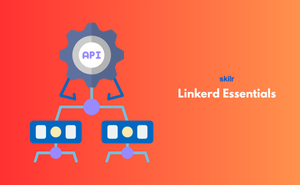👇 CELEBRATE CLOUD SECURITY DAY 👇
00
HOURS
00
MINUTES
00
SECONDS

The Linkerd Essentials certification focuses on teaching the foundations of Linkerd, an open-source service mesh that simplifies how microservices interact in modern applications. Instead of developers manually handling issues like security, retries, or monitoring, Linkerd takes care of these tasks automatically at the infrastructure level.
By earning this certification, learners gain a clear understanding of how service meshes help teams build more reliable and secure systems. It provides hands-on experience with Linkerd’s features, making it easier to manage complex applications that run on platforms like Kubernetes.
Who should take the Exam?
This exam is ideal for:
Domain 1 - Introduction to Service Mesh and Linkerd
Domain 2 - Getting Started with Linkerd
Domain 3 - Core Features of Linkerd
Domain 4 - Security with Linkerd
Domain 5 - Observability and Monitoring
Domain 6 - Advanced Linkerd Features
Industry-endorsed certificates to strengthen your career profile.
Start learning immediately with digital materials, no delays.
Practice until you’re fully confident, at no additional charge.
Study anytime, anywhere, on laptop, tablet, or smartphone.
Courses and practice exams developed by qualified professionals.
Support available round the clock whenever you need help.
Easy-to-follow content with practice exams and assessments.
Join a global community of professionals advancing their skills.
Primarily yes, it is designed for Kubernetes environments.
Yes, many companies use Linkerd in production environments.
Linkerd is lighter, simpler, and easier to set up compared to Istio.
To make communication between microservices secure, reliable, and observable.
Yes, basic Kubernetes knowledge is recommended.
Cloud, DevOps, and Kubernetes professionals, along with students in IT.
Yes, if they have basic Kubernetes and cloud knowledge.
High, as service mesh adoption grows with cloud-native applications.
Yes, it is completely open source and widely supported.
Yes, it offers built-in dashboards and integrates with Prometheus/Grafana.
DevOps Engineer, SRE, Cloud Engineer, and Software Developer.
Mutual TLS ensures encrypted and authenticated communication between services.
Yes, it provides load balancing, retries, and traffic management.
IT, finance, healthcare, telecom, and any microservice-based business.
No heavy coding; focus is on setup, configuration, and usage.